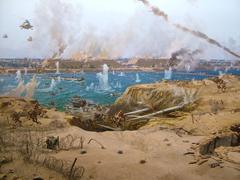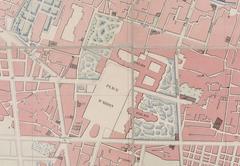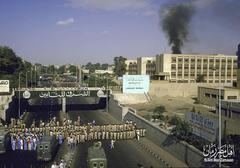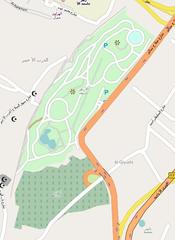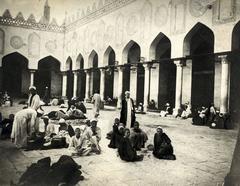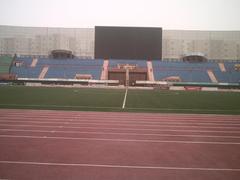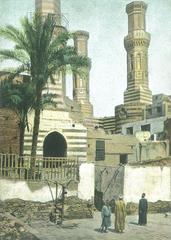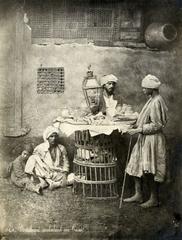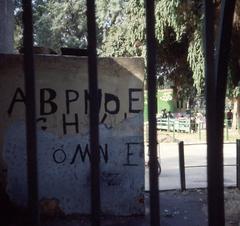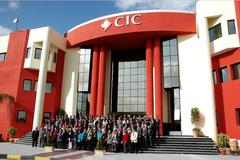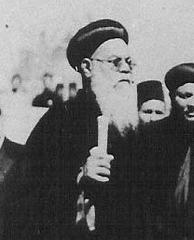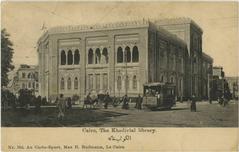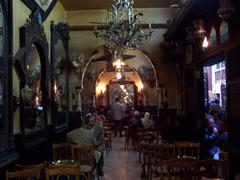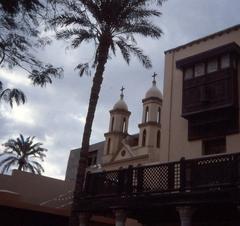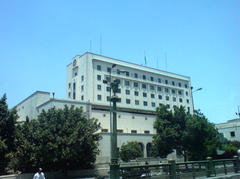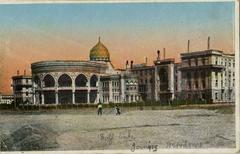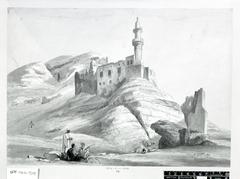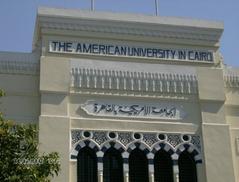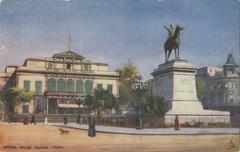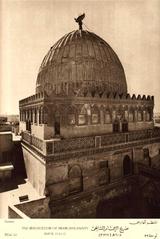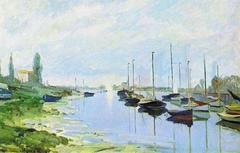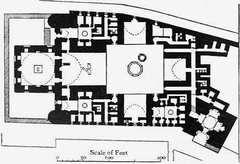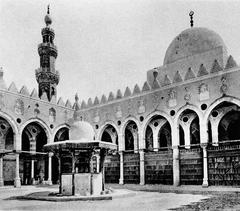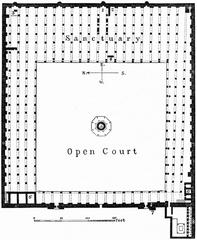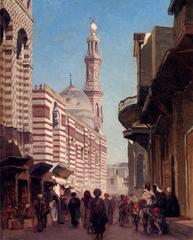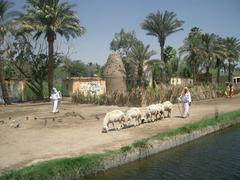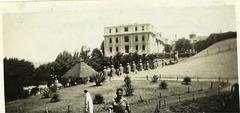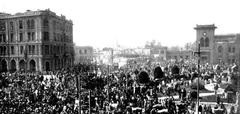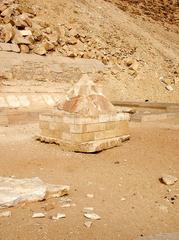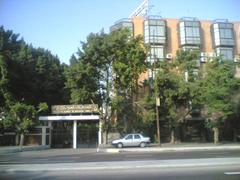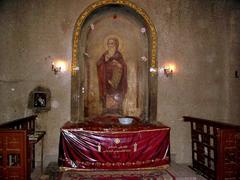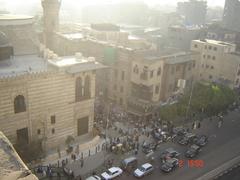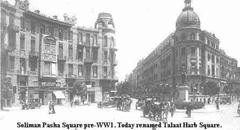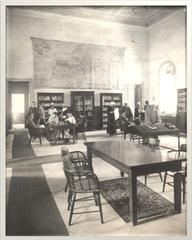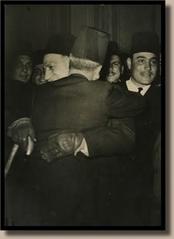Visiting Sultan Al-Ghouri Complex: Hours, Tickets, and Tips
Date: 19/07/2024
Introduction
Visiting the historical and cultural gem of Wekalet El Ghouri in Al Nozha, Cairo, offers a unique journey through Egypt’s rich past. Built during the reign of Sultan Qansuh al-Ghuri, the last Mamluk sultan, this complex served as a hub for commerce and religion in the early 16th century. The architectural design of Wekalet El Ghouri showcases the intricate stone carvings, geometric patterns, and marble and wood inlays characteristic of Mamluk architecture. Originally, it was a multifunctional site featuring a mosque, a madrasa, a khanqah, and a mausoleum. Over the centuries, the complex has undergone significant restoration efforts to preserve its historical integrity (UNESCO; ArchNet; Egyptian Ministry of Antiquities).
Today, Wekalet El Ghouri serves not only as a historical monument but also as a vibrant cultural center. It hosts various events, including traditional music and dance performances, art exhibitions, and educational workshops, making it a popular destination for both locals and tourists. Visitors can explore the site daily from 9:00 AM to 5:00 PM, with ticket prices set at 60 EGP for adults and 30 EGP for students (Al-Ahram Weekly). To make the most of your visit, consider joining a guided tour, which provides deeper insights into the complex’s history and architectural significance.
Table of Contents
- [History of Wekalet El Ghouri](#history-of-wekalet-el-ghourihistory-of-wekalet-el-ghouri)
- [Origins and Establishment](#origins-and-establishmentorigins-and-establishment)
- [Architectural Significance](#architectural-significancearchitectural-significance)
- [Historical Role and Function](#historical-role-and-functionhistorical-role-and-function)
- [Decline and Restoration](#decline-and-restorationdecline-and-restoration)
- [Visitor Information](#visitor-informationvisitor-information)
- [Visiting Hours and Tickets](#visiting-hours-and-ticketsvisiting-hours-and-tickets)
- [Travel Tips](#travel-tipstravel-tips)
- [Nearby Attractions](#nearby-attractionsnearby-attractions)
- [Accessibility](#accessibilityaccessibility)
- [Cultural Revival and Events](#cultural-revival-and-eventscultural-revival-and-events)
- [FAQ](#faqfaq)
- [Conclusion](#conclusionconclusion)
- [References](#referencesreferences)
History of Wekalet El Ghouri
Origins and Establishment
The Wekalet El Ghouri, also known as the Sultan Al-Ghuri Complex, is a historical site located in the Al Nozha district of Cairo, Egypt. It was established during the reign of Sultan Qansuh al-Ghuri, who ruled from 1501 to 1516. Sultan Al-Ghuri was the last of the Mamluk sultans before the Ottoman conquest of Egypt. The complex was constructed between 1503 and 1505, reflecting the architectural and cultural zenith of the Mamluk era (UNESCO).
Architectural Significance
The architectural design of Wekalet El Ghouri is a testament to the Mamluk style, characterized by intricate stone carvings, geometric patterns, and the use of marble and wood inlays. The complex includes a mosque, a madrasa (school), a khanqah (Sufi lodge), and a mausoleum. The mosque and madrasa are particularly noted for their elaborate minarets and domes, which are adorned with arabesque designs and calligraphy (ArchNet).
Historical Role and Function
Originally, the Wekalet El Ghouri served multiple purposes. It was a commercial hub where merchants could store and trade goods, a religious center for worship and education, and a social gathering place for the community. The khanqah provided lodging for Sufi mystics and travelers, while the madrasa offered religious and academic instruction. This multifunctional use made the complex a vital part of Cairo’s social and economic life during the Mamluk period (Cairo Heritage).
Decline and Restoration
Following the Ottoman conquest in 1517, the significance of the Wekalet El Ghouri diminished. The complex fell into disrepair over the centuries, suffering from neglect and the effects of natural disasters such as earthquakes. However, in the late 20th century, efforts were made to restore the complex to its former glory. The Egyptian government, along with international organizations, undertook extensive restoration projects to preserve the architectural and historical integrity of the site (Egyptian Ministry of Antiquities).
Visitor Information
Visiting Hours and Tickets
Wekalet El Ghouri is open to visitors from 9:00 AM to 5:00 PM daily. The ticket prices are as follows:
- Adults: 60 EGP
- Students: 30 EGP (with valid ID)
Tickets can be purchased at the entrance or online through the official Egyptian Ministry of Antiquities website.
Travel Tips
- Best Time to Visit: Early morning to avoid the crowds and enjoy the site in cooler temperatures.
- Dress Code: Modest clothing is recommended, as the complex includes religious sites.
- Guided Tours: Available at the site and highly recommended for a deeper understanding of the complex’s history and architecture.
Nearby Attractions
- Khan El Khalili: A famous bazaar located nearby, perfect for shopping and experiencing local culture.
- Al-Azhar Mosque: One of the oldest mosques in Cairo, known for its beautiful architecture and historical significance.
- Cairo Citadel: A medieval Islamic fortification offering panoramic views of Cairo.
Accessibility
The Wekalet El Ghouri is partially accessible to visitors with disabilities. Ramps and pathways are available, but some areas may be challenging to navigate. It is advisable to contact the site in advance for specific accessibility information.
Cultural Revival and Events
In recent years, the Wekalet El Ghouri has experienced a cultural revival. It has been transformed into a cultural center that hosts various events, including traditional music and dance performances, art exhibitions, and educational workshops. The complex now serves as a bridge between Egypt’s rich historical past and its vibrant contemporary culture. This revival has not only preserved the site but also made it a popular destination for both locals and tourists (Al-Ahram Weekly).
FAQ
Q: What are the visiting hours for Wekalet El Ghouri?
A: The site is open daily from 9:00 AM to 5:00 PM.
Q: How much are the tickets?
A: Tickets cost 60 EGP for adults and 30 EGP for students with valid ID.
Q: Is there a dress code?
A: Modest clothing is recommended due to the presence of religious sites within the complex.
Q: Are guided tours available?
A: Yes, guided tours are available and recommended for a richer experience.
Conclusion
The Wekalet El Ghouri stands as a remarkable example of Mamluk architecture and a testament to Egypt’s rich historical and cultural heritage. Its multifaceted history, from its origins as a commercial and religious center to its modern role as a cultural hub, underscores its enduring importance. Through ongoing preservation and cultural initiatives, the Wekalet El Ghouri continues to connect the past with the present, offering a unique and enriching experience for all who visit. For more updates, follow us on social media or download our mobile app Audiala to stay informed about upcoming events and exhibitions.
References
- UNESCO. (n.d.). Historic Cairo. https://whc.unesco.org/en/list/89
- ArchNet. (n.d.). Sultan al-Ghuri Complex. https://www.archnet.org/sites/1796
- Egyptian Ministry of Antiquities. (n.d.). https://www.antiquities.gov.eg
- Cairo Heritage. (n.d.). https://www.cairoheritage.org
- Al-Ahram Weekly. (n.d.). https://english.ahram.org.eg

